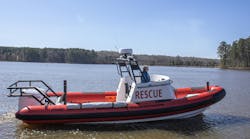Homemade explosives typically are made by combining an oxidizer with a fuel. Many of these materials are simple to make, requiring little technical expertise or specialized equipment. Instructions on how to make homemade explosives are available from many sources, but the recipes are often inaccurate and dangerous to follow. Even accurate recipes are extremely dangerous to follow and the explosives created often are highly unstable. More than one would-be bomb maker has been killed or injured while working with these materials.
Recipes for making nitroglycerin, mercury fulminate, blasting gelatin, dynamite, TNT, tetryl, picric acid, black powder and smokeless powder are found online and in printed sources. Picric acid, nitrogen trichloride and nitrogen tri-iodide are not marketed as commercial explosives, but are used in laboratories and other industrial settings. They are potentially very unstable and could be used for criminal purposes and terrorist purposes.
The purpose of the article is to provide easy-to-follow guidelines for emergency responders and incident commanders to assist in planning and training for incidents involving improvised explosive devices (IEDs). These guidelines and procedures should not replace common sense and experience. It is impossible to plan for every situation that may occur. New “best practices” and lessons learned become available on an ongoing basis, so these plans should be updated regularly. IEDs can consist of anything from homemade pipe bombs to sophisticated military ordnance; however, emergency responders are more likely to encounter IEDs and homemade explosives than military weapons in day-to-day responses.
Peroxide-Based
Explosives
Peroxide-based explosives such as triacetonetriperoxide (TATP), hexamethylene triperoxide diamine (HMTD) and methyl ethyl ketone peroxide (MEKP) are a growing concern. Individuals with little or no chemistry background can attempt to produce these materials. TATP has been used by terrorists in the Middle East to produce devices for suicide bombers’ belts and was used in terrorist attacks elsewhere, including the 2005 mass-transit bombings in London, England. TATP has been produced in the United States by terrorists, criminals, lone offenders and hobbyists.
Peroxide-based explosives are made by mixing concentrated hydrogen peroxide (an oxidizer) with a fuel such as acetone or ethanol along with a strong acid. Different recipes vary the fuel and concentration of peroxide to create a range of explosives. TATP and HMTD are dangerous to make and handle because they are very unstable. Both can be made in illicit laboratories located almost anywhere, since highly specialized equipment is not needed for the manufacturing process. TATP is typically found in crystal form while HMTD is usually a powder; however, peroxide explosives can be liquids as well.
Ammonia Nitrate/Fuel Oil
It is relatively easy to produce ammonium nitrate/fuel oil (ANFO) by obtaining the ingredients or by improvising them. Ammonium nitrate (AN) and fuel oil are widely accessible and relatively inexpensive, and neither is classified as an explosive. AN is sold at farming supply stores and its widespread availability makes it a likely target for theft or purchase by criminals and terrorists. The same is true of the AN precursors ammonium hydroxide and nitric acid.
Fuel oil number 2, or diesel fuel, is the most popular fuel oil used in the synthesis of ANFO. Diesel and other fuels are available at gas stations, heating and appliance stores, hardware stores, farming supply stores and outlets that sell gas- or diesel-powered boats. Other common fuels such as nitro-methane and aluminum powder can be used. ANFO was used during the 1995 terrorist attack on the Murrah Federal Building in Oklahoma City, OK, and the 2011 terrorist attack with a vehicle-borne improvised explosive device (VBIED) in Oslo, Norway.
Explosives Labs
Some explosive labs do not need to heat or cook any materials, so they may lack the glassware, tubing, Bunsen burners, chemical bottles and other paraphernalia traditionally associated with the term laboratory. However, a lab established to make explosive chemical mixtures may look more like a traditional industrial or university chemistry lab; those used to make TATP, HMTD or other peroxide-based explosives may look much like meth or drug labs. These can be mistaken for clandestine drug labs due to the presence of household chemicals. Some IED materials can also be mistaken for narcotics.
Common explosive materials such as black powder or smokeless powder can be easily incorporated into an IED, but some IED materials such as TATP and HMTD require a production lab to create. The materials needed to produce these two dangerous explosives can be found in hardware and drug stores. The basic ingredients are a fuel and oxidizer.
Use caution, as peroxide-based explosives are extremely sensitive to heat, shock and friction. Indicators of a possible explosives lab may include:
• Refrigerator/coolers/ice baths
• Glassware and laboratory equipment
• Blenders
• Blasting caps/batteries/fuses/switches
• Pipes/end caps/storage containers
• Shrapnel-type materials
• Strong acidic odors
• Hot plates
Common ingredients found in TATP/HMTD labs include acetones, hydrogen peroxide and strong or weak acids. Once the materials are produced, they can be incorporated into a variety of IEDs. Raw materials being transported using a cooling method (such as ice in a cooler) should be treated with caution. All clandestine labs are dangerous and responders should be able to safely identify them and take appropriate measures. If mishandled, materials in an explosives lab can pose a significant danger to emergency responders.
Other clues to the presence of an explosives lab include literature on how to make bombs, significant quantities of fireworks, hundreds of matchbooks or flares, ammunition, black powder, smokeless powder, blasting caps, commercial explosives and incendiary materials. Finding these items in conjunction with components that can be used to make IEDs – pipes, activation devices, propane containers and the like – would give even more evidence of an explosives lab. Also, electronic components such as wires, circuit boards, cell phones and batteries can point toward the possible design and production of IEDs.
Responders must use extreme caution inside any type of clandestine lab. Do not attempt to approach, move, handle or disarm a confirmed or suspected IED or homemade explosive. This is a job for specially trained and equipped personnel.
On-Scene Activities
Information on the construction and deployment of homemade explosives is readily available to the public. Methods of explosives attacks are described in al-Qaeda and jihad training manuals and videos. Specialty publishers produce books that show how to build devices using improvised materials and commercial products. Military manuals are also used as sources of information. All these sources are available to anyone interested in obtaining them.
A responder who comes across a suspicious material or item during routine activities or tactical operations should immediately inform all personnel and leave the area. Do not use your radio, cell phones or mobile computer until you are a safe distance (at least 300 feet) from the material or item. The most effective defense is to be aware of your surroundings. Based on your threat, if you think something does not belong in your area, consider it suspicious.
IED Identification
It is important that responders be able to recognize possible explosive materials and IEDs, which can be designed to be concealed or look like ordinary items:
• Be cautious of any items that arouse your curiosity
• The exterior inspection of a suspected device does not ensure its safety
• Unusual devices or containers with electronic components such as wires, circuit boards, cell phones, antennas and other items attached or exposed
• Devices containing quantities of fuses, fireworks, match heads, black powder, smokeless powder, incendiary materials and other unusual materials or liquids
• Materials attached to an item such as nails, bolts, drill bits and marbles that could be used for shrapnel
• Ordnance such as blasting caps, detonating cord, military explosives, commercial explosives and grenades
• Unusual chemicals and containers
• Any combination of the above items
Responders and special teams must also be able to recognize the potential danger of booby traps and take appropriate measures to ensure their own safety and the safety of others. Booby traps, or anti-personnel devices (APDs), can be used as weapons against emergency responders. Those involved in drug trafficking or production use booby traps to protect their investments, serve as warning devices and to help allow their escape from a location. Typically, these devices will be discovered when conducting routine activities. Booby traps can be designed to be concealed or look like ordinary items.
Summary
Safety is paramount for responders at these types of events. Domestic and international terrorists and criminals are constantly improving their methods, so continuous responder training is important.
The more our public safety agencies prepare, the greater the chance they will effectively manage any type of situation that may arise. If an IED incident or explosives lab incident occurs in the United States, trained and educated responders can help lessen the impact with a safe and effective response.
Responder Actions
If you find yourself near a suspicious material or item, take these steps:
• Call out to other response personnel to stop moving
• Stop and look around for any other devices or suspicious items
• Do not touch or move anything
• Do not operate light, power or electrical switches
• Keep other responders from coming over to look or take photos
• Do not approach or handle the suspected device/materials once it is identified as a risk
• Move out of the area the same way you entered by retracing your steps
• Conduct personal accountability outside the danger area
• Isolate and secure the area
• Establish zones of control (hot, warm, cold)
• Establish a command post and unified command
• Shield yourself, other responders and the public
• Call for a local or state bomb squad or hazardous device unit
• Notify other proper authorities, depending on the jurisdiction and situation






